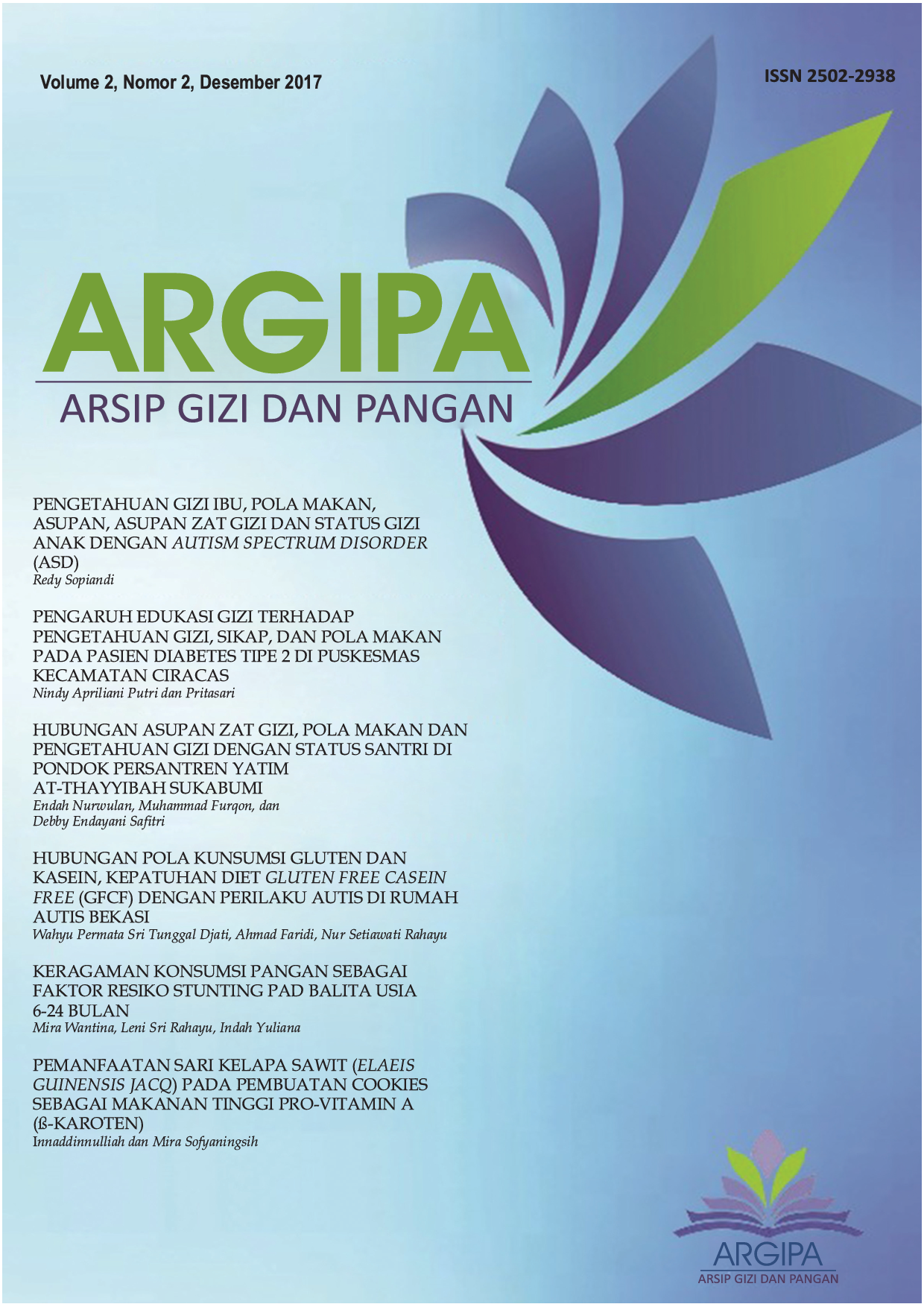The relationship of gluten and casein consumption patterns, gluten free casein free (GFCF) diet compliance with autism behavior in autism house of Bekasi
Abstract
The prevalence of autism children is increasing, around 2013, it is estimated that people
with autism in the world reach 1 per 160 children or around 0.3%. There are two types of
protein that need to be avoided by children with autism, namely gluten and casein. The
general objective of this study was to determine the relationship between gluten and casein
consumption patterns, compliance of the Gluten Free Casein Free (GFCF) diet with autistic
behavior in Autism Home, Bekasi. The subject of the study was autism children at the Bekasi
Autism House, which numbered 25 children. The study was conducted using a cross sectional
design. Data collection on gluten and casein consumption patterns and GFCF dietary
compliance using Food Frequency Questionnaire (FFQ), while data on autistic behavior were
collected using the CARS2-ST ST (Childhood Autism Rating Scale 2 – Standard Version)
questionnaire. The results showed that more than half the number of samples had a rare
pattern of consumption of gluten and casein. As many as 88% of the samples did not adhere
to the GFCF diet and 76% of the samples had severe autistic behavior. The chi-square test
results showed that there was a correlation between gluten consumption patterns and GFCF
diet compliance with autism behavior (p-value <0.05).

















